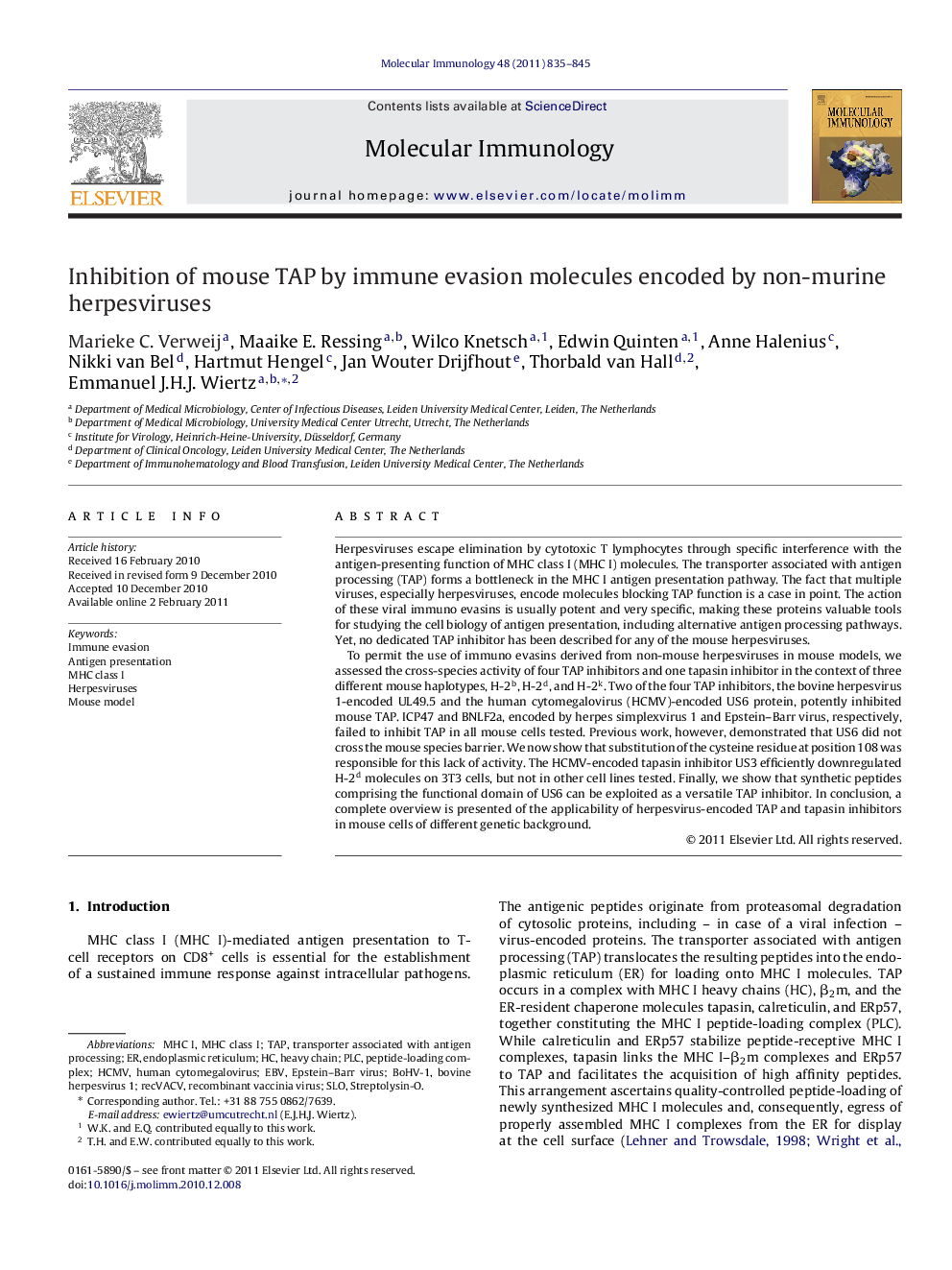| Article ID | Journal | Published Year | Pages | File Type |
|---|---|---|---|---|
| 5917741 | Molecular Immunology | 2011 | 11 Pages |
Abstract
To permit the use of immuno evasins derived from non-mouse herpesviruses in mouse models, we assessed the cross-species activity of four TAP inhibitors and one tapasin inhibitor in the context of three different mouse haplotypes, H-2b, H-2d, and H-2k. Two of the four TAP inhibitors, the bovine herpesvirus 1-encoded UL49.5 and the human cytomegalovirus (HCMV)-encoded US6 protein, potently inhibited mouse TAP. ICP47 and BNLF2a, encoded by herpes simplexvirus 1 and Epstein-Barr virus, respectively, failed to inhibit TAP in all mouse cells tested. Previous work, however, demonstrated that US6 did not cross the mouse species barrier. We now show that substitution of the cysteine residue at position 108 was responsible for this lack of activity. The HCMV-encoded tapasin inhibitor US3 efficiently downregulated H-2d molecules on 3T3 cells, but not in other cell lines tested. Finally, we show that synthetic peptides comprising the functional domain of US6 can be exploited as a versatile TAP inhibitor. In conclusion, a complete overview is presented of the applicability of herpesvirus-encoded TAP and tapasin inhibitors in mouse cells of different genetic background.
Keywords
Related Topics
Life Sciences
Biochemistry, Genetics and Molecular Biology
Molecular Biology
Authors
Marieke C. Verweij, Maaike E. Ressing, Wilco Knetsch, Edwin Quinten, Anne Halenius, Nikki van Bel, Hartmut Hengel, Jan Wouter Drijfhout, Thorbald van Hall, Emmanuel J.H.J. Wiertz,
